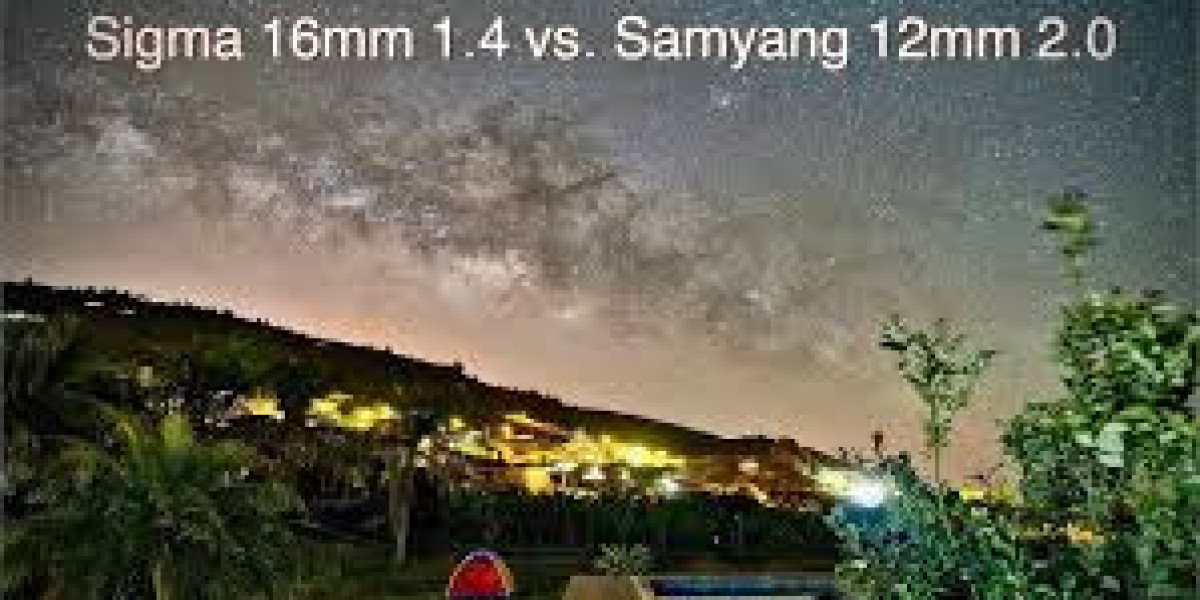Samyang 12mm vs 16mm Manual Focus Guide
Introduction
Wide-angle lenses are essential tools for photographers who want to capture expansive scenes, dramatic perspectives, and creative compositions. Within the Samyang lineup, two popular manual focus options stand out: the 12mm and the 16mm. While both are designed to deliver high-quality wide-angle results, they serve slightly different purposes. This guide explores the differences between the Samyang 12mm and 16mm manual focus lenses, helping photographers decide which one better suits their style and subject matter.
Samyang 12mm: Ultra-Wide Creativity
The Samyang 12mm lens is a compact ultra-wide option that excels in scenarios where a broader field of view is required. It is often favored by landscape and architecture photographers, as well as astrophotographers who need to capture sweeping skies with sharp details. With its short focal length, the 12mm produces exaggerated perspectives, making close subjects appear larger and adding depth to images. Its lightweight build and portability also make it an attractive choice for travelers and street photographers who value compact gear.
In terms of performance, the 12mm delivers excellent sharpness across the frame with minimal chromatic aberration. Its manual focus design encourages precision, particularly for astrophotography where focusing at infinity is crucial. Despite its ultra-wide field, distortion is well-controlled, making it reliable for capturing structures and interiors.
Samyang 16mm: Balanced Wide-Angle Versatility
The Samyang 16mm lens offers a slightly narrower field of view compared to the 12mm but balances wide-angle coverage with less dramatic perspective distortion. This makes it more versatile for general wide-angle photography, including landscapes, environmental portraits, and video work. The focal length provides a natural look without exaggeration, which is ideal for photographers who want wide coverage without the extreme feel of an ultra-wide.
Optically, the 16mm is designed to provide strong center sharpness, good contrast, and smooth rendering. Its wider maximum aperture compared to many wide-angle lenses allows better low-light performance and control over depth of field. The manual focus operation is smooth and precise, supporting creative techniques such as controlled focus pulls for video and fine adjustments for still photography.
Key Differences Between the 12mm and 16mm
The main distinction between the Samyang 12mm and 16mm lies in perspective and versatility. The 12mm captures more of the scene, which is perfect for tight spaces, interiors, and dramatic skies. However, its ultra-wide nature may not suit every subject, as distortion can exaggerate elements near the frame edges. The 16mm, while still wide, feels more natural and balanced, making it suitable for a wider range of shooting styles without the extreme distortion of the 12mm.
Choosing the Right Lens for Your Needs
When deciding between these two lenses, the choice depends on shooting goals. If your focus is astrophotography, creative cityscapes, or dramatic wide landscapes, the 12mm will give you the immersive coverage you need. On the other hand, if you want a lens that can serve as a general-purpose wide-angle with more controlled perspective, the 16mm is the better option. Both lenses share the reliable build and optical performance that Samyang is known for, ensuring that either choice adds value to your kit.
For photographers expanding their gear collection in markets where diverse camera lenses are in demand, selecting between the 12mm and 16mm comes down to creative preference. The 12mm leans toward specialized, ultra-wide imagery, while the 16mm balances practicality with wide coverage.
Conclusion
The Samyang 12mm and 16mm manual focus lenses are both excellent options, but they cater to different creative needs. The 12mm is a specialist lens that thrives in expansive and dramatic compositions, while the 16mm offers greater versatility for everyday wide-angle use. Understanding these distinctions ensures that photographers choose the lens that aligns best with their vision, making every frame a reflection of both technical precision and artistic intent.






